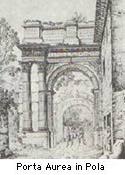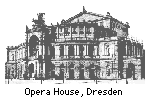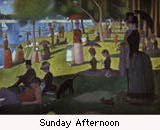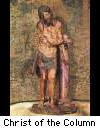|
Schinkel, Karl Friederich 1781-1841
German painter and architect whose Romantic-Classical style made him a model for national taste in his days. Born in Prussia, he studied at the Bauakademie in Berlin. Between 1803 and 1805, he travelled through Italy and France. Anti-French sentiments turned many Prussian architects against the classical Roman manner favoured by the Ecole des Beaux Arts and led Schinkel to design in a Neo-Greek style that symbolically recalled the political and moral freedom of Athenian Greece.
www link :
Semper was a German architect, art critic, and professor of architecture, who designed and built the Dresden Opera House. He wrote extensively about the origins of architecture, and he was one of the major players of the debates surrounding polychrome architecture of ancient Greece. Beside the Dresden Opera he designed works at any scale, from a baton for Richard Wagner to urban interventions like the re-design of the Ringstrasse in Vienna.
www link :
Seurat studied at the Ecole des Beaux-Arts in Paris. He left the school in 1879 to perform his military service in Brest. While in Brest, Seurat drew scenes of the beaches and sea. Back in Paris he worked on an immense painting entitled 'Sunday Afternoon on the Island of La Grande Jatte'. The final painting was preceded by more than 200 drawings. In all, Seurat completed seven major paintings, 40 smaller paintings or sketches, and almost 500 drawings. The Pointillism technique, in which small dots of color are grouped to create a vibrant work, that Seurat introduced was adopted by his followers, the Neo-Impressionists.
www link :
Diego de Siloe was one of the leading figures in the transition from Gothic to Renaissance in Spanish art. Diego formed his style in Italy where he collaborated with Bartolomé Ordoñez. By 1519 he returned to Burgos where he carried out several important commissions in the cathedral. It was as an architect rather than as a sculptor that he emerged as one of the great figures of Spanish arts. His masterpiece is Granada Cathedral, where he took over as architect in 1528.
www link :
|



